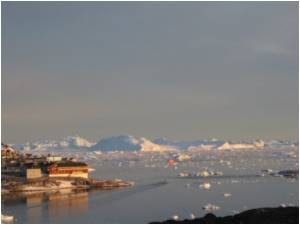Glaciers which behave independently from the ice sheet is being looked by scientists, despite having some physical connection to it.

Using lasers which measure the height of the ice from space, and a recently completed inventory of Greenland's glaciers and ice caps, scientists from the European-funded ice2sea programme, were able to determine changes in the mass of those ice bodies, separate from the main ice sheet.
It also showed that the contribution to sea-level rise from the glaciers of Greenland separated from the ice sheet makes up around 10 percent of the estimated contribution of the entire world's glaciers and ice caps, and that contribution is higher than expected.
Lead author Dr. Tobias Bolch, from the University of Zurich, said, "The melting of ice on Greenland is known to be one of the major sources for global sea-level rise."
"Beside the large ice sheet, there are thousands of peripheral glaciers which are not connected to the ice sheet or can be separated from it due to the existence of ice divides. The area of those glaciers is about 50 times higher than the ice cover of the European Alps.
"Consequently, it is important to investigate not only the ice sheet but also these local glaciers," he said.
Advertisement
When they added in glaciers which had some link to the ice sheet, but which were still distinct from it in the way they flowed, this figure increased to up to around 50 Gt per year.
Advertisement
The study gives more detail to the make-up and stability of Greenland's glaciers showing that mass loss is highest in the warmer south east of the land mass and lowest in the colder north.
It also shows that the loss of ice is about 2.5 times higher for those separate glaciers than for the ice sheet, leading to the 15-20 percent figure.
The findings are published in Geophysical Research Letters.
Source-ANI








